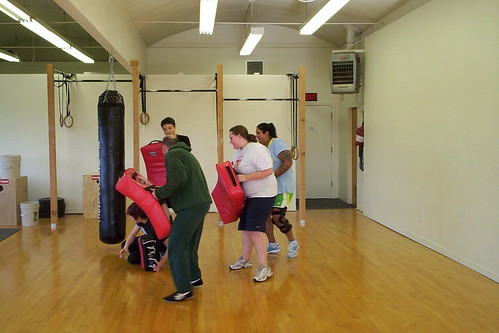Your Toddler and TV: Why it’s Unhealthy
Children who increased the number of hours a week they spent watching TV between the ages of 2 and 4 may risk weight problems later on in life, a new study shows. After surveying the TV habits of more than 1,300 children, the Canadian study found that children whose weekly TV intake increased over the two-year time period had a higher-than-average waist circumference by age 10, and may have a greater chance of becoming overweight as adults.
The American Academy of Pediatrics recommends that children older than 2 not watch more than two hours of TV per day. The study found watching 18 hours of TV a week at 4.5 years of age would result in an extra 7.6 millimeters of waistline by age 10. Watching more than the recommended amount of TV may set up these youngsters for weight problems in high school and into adulthood.
Remaining sedentary throughout the day and eating nutrient-rich food is primarily to blame for the study’s results. The average amount of time spent in front of the TV was 8.8 hours per week at the start of the study (age 2). This increased to 14.8 hours per week by the end of the study two years later. Although XL toddler Halloween costumes may seem cute now, it may actually be an indication of a problem your child will battle later in life.
Changes You Can Make
If you’re a parent with a baby or a toddler, there are certain things you can do to limit their time spent in front of the TV and nip this potential health problem in the bud. First, permit your child to watch no more than two hours of TV per day. This includes movies. Encourage them go outside and be active; sign them up for peewee sports teams or just give them something to do in the great outdoors. Yes, it’s OK to make them do it – you are the parent, after all. Just like watching TV, playing sports and being outside enjoying Mother Nature are also habit-forming. An active lifestyle allows kids less time to be sedentary.
Remember to limit what they eat while watching TV, or eliminate this entirely. Give them nutritional supplements from companies such as Fortune-Hi Tech Marketing to help ensure they are getting the correct amount of vitamins, minerals and nutrients. Eating a box of cookies while watching TV is a fast track to cardiovascular problems later in life, as well as put them at risk for diabetes and other complications.
Make TV Time Count
If your toddler is going to watch TV for an extended period of time, make sure it’s educational, like “Sesame Street” or “Dora the Explorer” – at least they’ll be working out their minds, if not moving their bodies.
Serious Health Risks
Beyond the health risks associated with a child being overweight and possibly diabetic, there are other negative effects of watching so much TV. The toddler years are an important developmental phase and habits children learn during this time are often formed for the rest of their lives. Excessive TV may also lead to social problems, as TV is no substitute for real-world interaction with children their own age.
Setting limits on the amount of TV your child can watch is only part of the battle. Making healthy choices like using FHTM products and getting your children outside will also help your child want to be healthier and more active.
Lenny Houston A nutritionist and weight trainer, Lenny has also devoted much of his time to creating healthy and delicious recipes for people with food restrictions and allergies. He is currently working on a cookbook for the vegan, gluten free and diabetic.
5 Ways You’re Probably Already Prepping Your Child for Preschool
 It’s never too early to start preparing your little one for the big transition into preschool. It’s important to stimulate their minds so that they’re ready to jump in and start their schooling. You’re probably already prepping your child, even if you didn’t realize it.
It’s never too early to start preparing your little one for the big transition into preschool. It’s important to stimulate their minds so that they’re ready to jump in and start their schooling. You’re probably already prepping your child, even if you didn’t realize it.
Play outside.
Exploring the outdoors not only creates adventure, but it’s your child’s first science class. Digging in dirt, feeding birds and rolling around in the grass sparks his or her interest in the natural world. Think of it as a basic bio lab.
Read a bedtime story.
There’s no better way to promote literacy than reading out loud to your child. Try choosing two bedtime books. That way, one can be an old favorite that they’ve probably memorized, but the other can be a new story with unfamiliar, stimulating sentences.
Set play dates.
Play dates are socializing practice for the real world. In preschool, your child will be surrounded by other little ones. He or she will have to play, share, take turns and interact with their classmates so learning these skills in a more one-on-one environment is a great start.
Play dress-up.
Running around in a pretend princess dress isn’t just a good time. It’s helping shape your toddler’s thought process. Playing pretend is your child’s first attempt at abstract thinking.
Finger paint.
Or draw. Or color. Or use watercolors. Art allows for expression, creativity and color recognition. And who knows, maybe you’re painting with the next Picasso.
Sources:
Fliess, Sue. “How Playing Dress-Up Shapes Your Child.” Education.com <http://www.education.com/magazine/article/How_Dress_Shapes_Your_Child/>
Rabkin, Rachel. “Prepare Your Toddler for Preschool.” Parents.com. <http://www.parents.com/toddlers-preschoolers/starting-preschool/preparing/activities/>
Want to Give Your Single Mom Friends the Perfect Christmas Present?
If you’re a parent with a partner, you may marvel at your single mom friends from time to time throughout the year and wonder how they manage to juggle it all. She may appear to have it all, and she probably doesn’t need any more lotion or candles, but I bet there are a few things on her list she is reluctant to ask for this Christmas.
Of course, much of this is true for single dads too.
Be a Good Elf
Young children can’t just head off to the mall to go Christmas shopping, but they will really feel proud if mommy unwraps something special from them on Christmas morning. You’re going shopping anyway… why not have a chat with mom and volunteer to bring the kids so they can buy something for her? She can give you a good idea of how to guide them and provide their shopping money, and it will be a real treat for her to be genuinely surprised by their gifts.
If she’s a single mom because of a breakup with the children’s father, she probably doesn’t enjoy shopping for their Christmas present for him, so that’s another way friends can step in and be helpful.
Think Outside the Box
It’s just plain fun to wrap up a lovely gift to hand someone, but some of the best gifts don’t lend themselves to being wrapped. You can’t actually create a few more hours in the day for your friend, but you can do the next best thing by helping her mow down that to-do list of things she hates doing. Is she annoyed by DIY jobs around the house she lacks the time, confidence or skills to do? How about a gift certificate from a local handyman? You can probably arrange not to specify the exact job to be done if you are concerned she will take offence. Everyone could use a few hours of skilled work fixing things around the house! If she doesn’t exactly love gardening, a gift certificate from a local landscaper to come and give the yard a good spring cleaning in a few months so it will be ready for the kids to enjoy might be just the thing. She’ll be reminded of your thoughtfulness long after Christmas. You can also make your own coupon good for an evening of you babysitting the kids.
Wrapping It Up
If you do want a more traditional gift of the easy to wrap variety, think about what will suit her busy life. A book of short stories is better than a long, complicated novel if she rarely has time to sit down and relax. A cookbook of quick and simple recipes might get more use than one full of ideas that involve hours of preparation. And if you’ve been a good elf and asked what she’d like from her children, you already have some good ideas.
Aishwarya Vohra is a part-time writer and a full-time home maker. She has written in other places like this Graco Nautilus 3-in-1 Car Seat Review. She has interest in all things creative, whether it is unique house decoration ideas or creating art from trash.
3 Practical Self-defense Tips for Children
*Note from MomTrusted*
The information below is for extreme cases and while we don’t think it’s useful to scare your child or make them feel paranoid that people are out to get them, we do believe there are lots of constructive ways to teach these things to children to encourage safety. Below outlines what a child should do if they are being abducted but most children will never find themselves in this situation. Here is a great resource for teaching your child about stranger safety without scaring them: kidpower.org/library/article/safe-without-scared/
While everyday situations do not call for self defense, being aware of dubious situations and being able to defend yourself should the need arise is important for children growing up in our society. Below are three tips on how to defend yourself as a young adult or child.
Be Aware
When a child is away from their parents or in an area they don’t know, encourage them to pay attention to their surroundings. Avoid areas such as alleyways or unlit sidewalks, and try to provide them with information on where they could go if they got lost or separated, such as a store, front desk, or a police station, to try and get help. Make sure they know to avoid vehicles or people they do not know. Teach them to avoid talking with or going anywhere with strangers, such as an adult at the park who may begin to talk to them out of nowhere. Remind them that if they are approached by a stranger, they should go to an adult they do know or leave immediately to avoid any conflicts. Teach them to identify individuals who may be able to help them, such as a police officer, and how to contact authorities if this is necessary.
Getting Away
If something does happen to your child, give them ideas on what they can do to remove themselves from the situation. Encourage your child to make as much noise as they can, screaming things such as “help” or “fire” which will get the attention of people in the area. Encourage them to struggle and fight to get away, and remind them that in an emergency where they are potentially being taken or kidnapped, things like scratching or biting or pulling hair may help them escape. Remember to include that if they are able to get loose, they should run away as fast as they can, continuing to ask for help and encouraging people to call 911. A self defense class may be a good way to help them feel they have a way of getting away if something were to happen, as this will help your child have a positive way to defend themselves if they are at risk for being harmed or taken. Most rec centers, gyms, or local activity centers have classes for children in self defense.
Inform and Alert
Teach your child how to move with a group and know their information. Your child should always stay with a group whenever possible, and never leave the house by themselves, especially after dark. Encourage your child to take a dog with them if they own one when going out on walks or running errands if at all possible. A child should always know 911, as well as their address, phone number, and name of at least one parent or guardian. Make sure they know their way around where they are going, as well as escape routes or shortcuts if they need to make a quick escape. They should also know how to get to a safe location other than home, such as a bank, store, or school, as these places are all locations where there are adults who can help with a situation as needed.
Christopher Watson is a martial arts instructor with a background in security and recently contributed to the Top 10 Best Online Homeland Security Degree Programs for professionals looking to get quality training in security from home.
Attached Images:License: Creative Commons image source
Why We Love PBS

Sure we love Arthur and Clifford, but TV shows with cute animals isn’t the only reason we love PBS. PBS has perfected fun education by producing interactive activities and even developing it’s own learning initiative program.
Ways PBS is helping tots and preschoolers:
Early learning for children through the Ready to Learn Program
The Ready to Learn (RTL) program’s goal is to narrow the achievement gap in education. RTL, a partnership between PBS, the Corporation for Public Broadcasting, Congress and the U.S. Department of Education, uses media to promote math and literacy education, especially for at-risk kids.
While a lot of the RTL program is geared toward older kids, PBS dedicates a special commitment to early education. The program uses educational content in its media to make learning fun. Both math and literacy skills framework, based on state guidelines, help direct RTL television content, such as Curious George and Sid the Science Kid. The framework also influences RTL educational video and computer games.
Educational computer games
Computer games on PBS Kid’s website are engaging for kids, but also promote learning. The Cat in the Hat’s Sketch-a-Mite teaches shape recognition through drawing, while the Hermit Shell Crab Game demonstrates measurement by having the kids match crabs into the right sized shells. Dinosaur Train Camera Catch’s flying dinosaurs instill pattern recognition in children 3 to 5 years. With scores of free, educational games, and a large portion of them for preschoolers, PBS makes learning more fun than ever.
PBS Parents
PBS doesn’t just cater to the tots. It has its own section for parents, filled with recipes, game ideas and crafts. Read up on how to make yummy (and simple!) chocolate bark. Learn how to make crystallized snowflakes out of pipe cleaners. But it’s not all crafts and treats in PBS’s parent corner. The site offers helpful advice on everything from building confidence in girls to helping your little ones eat healthier.
Sources:
–PBS.org
–PBSkids.org
Attached Image License: Some Rights Reserved image source
Top 5 iPhone Apps for Moms

5. Mom’s Daily Planner: All-In-One Organizer
Price: Free, $4.99 for premium
Parenting can be a lot like the circus: messy, loud and full of juggling and balancing acts. Download the Mom’s Daily Planner app to help keep the chaos in order. This organizational tool offers shopping and to-do lists that users can color-code, set due dates for and cross off completed tasks. The included calendar comes with alarms and can sync with other calendars such as iCal, Google Calendar and Hotmail Calendar. Just because parenting is chaotic, doesn’t mean your life has to be.
4. The Mommy Playbook Forums
Price: Free
Use this forum to talk to other moms and moms-to-be throughout the entire process, starting with trying to get pregnant, all the way through parenting toddlers. Ask questions, share funny stories and upload photos from iPhones. The Mommy Playbook Forums creates a community that helps one another through the challenging world of parenting.
3. I’m Expecting Pregnancy App
Price: Free
Moms-to-be can track their pregnancies using MedHelp’s I’m expecting iPhone application. Compare symptoms with other moms-to-be and photograph a growing baby bump. Keep track of gained weight and find out if it’s too much, too little or right on target. Interact with other pregnant woman by posting and answering questions within the health community. Finally, store doctor information and appointments for easy access and organization.
2. Life360 Family Locator
Price: Free
Life360 Family Locator helps moms keep their ducks in a row. Keep tabs on all family members and view their locations on the app’s map. View safety points or threats near users and send panic alerts to notify loved ones of any dangers. The group messaging feature also helps keep everyone on the same page for after-school schedules, pick-up duties and family dinners.
1. SnipSnap Coupon App
Price: Free
This application helps busy moms save money without carrying around wallet-fulls of coupon clippings. Simply scan any coupon into the app’s database on your phone. Tired of missing out on deals because of expired coupons? SnipSnap Coupon App sends expiration alerts! Plus, the app will send a push notification when a store with coupons is entered so deals are never lost in the shuffle. Share savings via email, Facebook or Twitter so other moms won’t miss out.


















